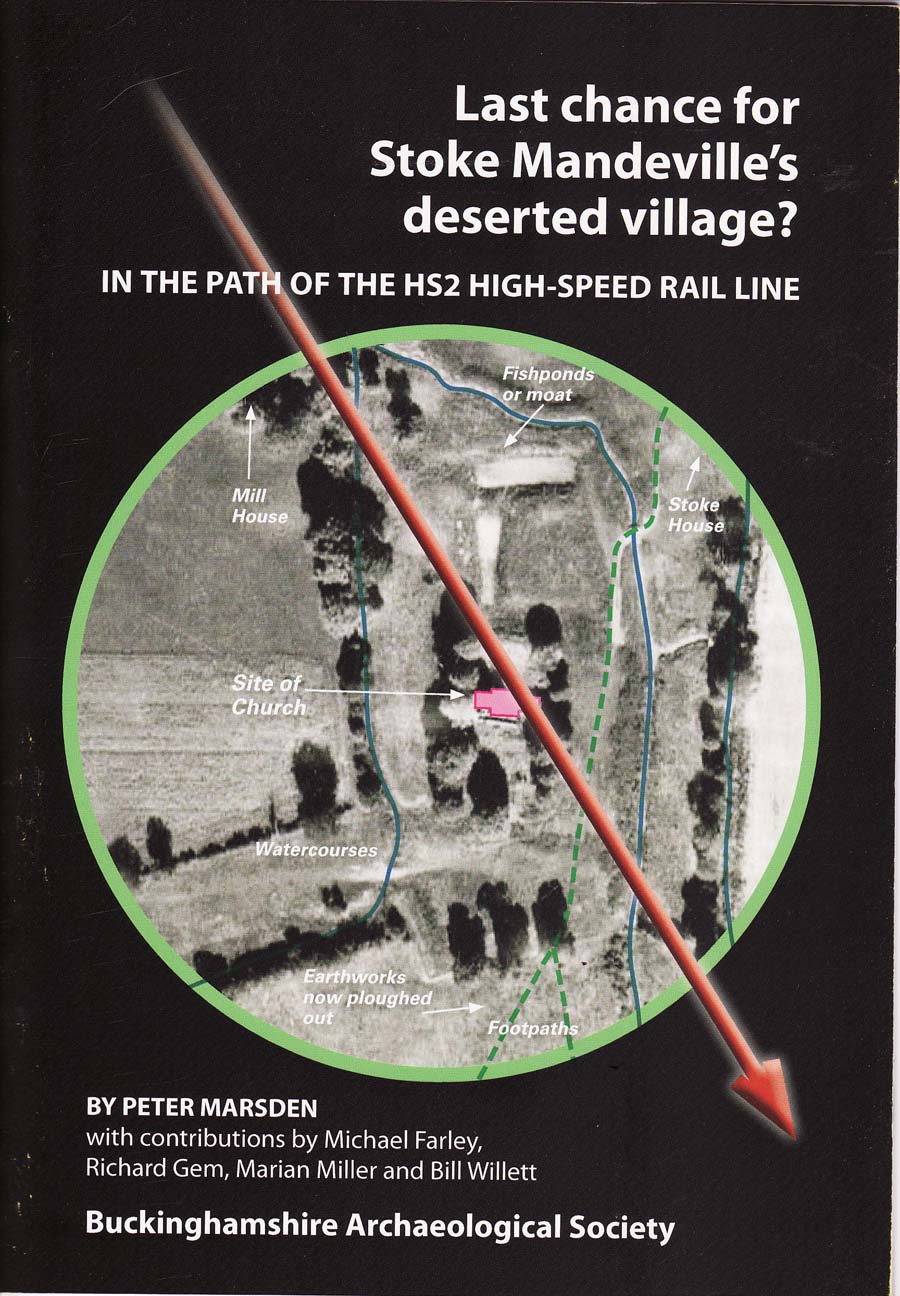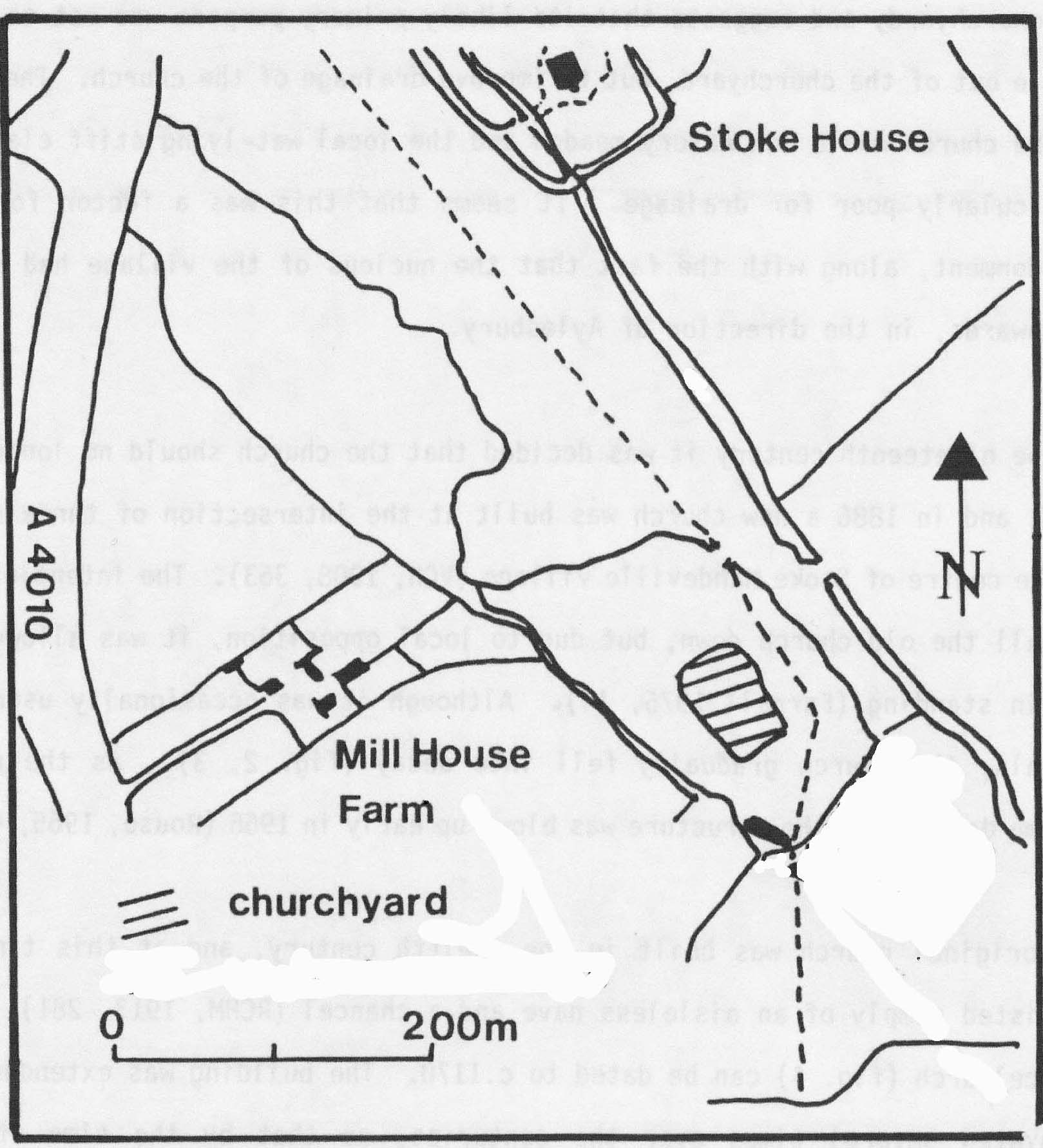
|
|
|
|
|
|
|
|
|
|
|
|
|
|
|
|
|
|
|
|
|
|
|
|
|
|
|
||||
|
The village of Stoke Mandeville was not always where it is today. Today the original village site, in fields half a mile to the south of the present village centre, is deserted. Not much is known about the original village, though it was there in Saxon times before the Normans invaded England in 1066. In Domesday Book, 20 years later, there were at least 24 families living there, with three slaves. It had its own mill, valued at 10 shillings.
THE RUINED CHURCH The Church of St Mary the Virgin served as parish church until 1866, and the last burials were made in its churchyard in 1908. By then the village centre had long migrated northwards to its present position and the new parish church built. The new turnpike road of 1822 avoided the old village site, so this was probably deserted by then. The old church gradually fell into disrepair, then into ruin. What was still standing was pulled down in 1966. It has never been excavated, nor even surveyed in any detail. It isn't a ‘scheduled ancient monument’ so is unprotected by legislation. But from surveys made 100 years ago we do know that the church had a very narrow and plain chancel arch, only 5ft 10inches wide. This narrowness indicates that the chancel was constructed at least in the Norman period and may even be Saxon. The surveys also showed that the church had been built in the 12th century, extended in the 14th, and given a brick-built tower in the 17th century. But the ruins can still tell their story. Much of the archaeological evidence for the history of the old church lies buried in the rubble we see today. THE WATERMILL Even to the untutored eye it is clear that this is a man-made landscape. The whole lie of the land indicates that the site may have been selected originally to take advantage of the two streams that fed this narrow valley. The courses of both have been changed to serve as ‘mill leats’. But where was the bishop's mill? A detailed study of the three watercourses may lead to its site and allow excavation – but only if HS2 can be hald at bay. READ OUR PAMPHLET: For a more detailed history of the deserted village, and the impact that HS2 will have on it, read the society's pamphlet: |
LAST CHANCE FOR STOKE MANDEVILLE'S DESERTED VILLAGE?

|
The low priority that is being given by HS2 and the government to the damage that the line will cause to the historic landscapes through which it will pass is a particular concern. The situation faced by Stoke Mandeville's deserted village site, unprotected by legislation and prey to the bulldozers, is but one example among many sites along the route – in Buckinghamshire and other counties along the route. To highlight this, this pamphlet summarises the evidence for the national importance of ‘old Stoke Mandeville’ and the need for its protection from HS2.
• Printed copies copies are sold out but you can
|
